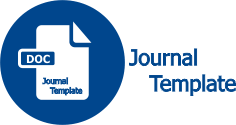Aplikasi Arisan Marga Berbasis Web Menggunakan Metode Linear Congruential Generator
Abstract
The advancement of technology has significantly impacted various aspects of life, including the traditional practice of "arisan marga" among the Batak ethnic group. Despite having been conducted manually for many years, technological progress has opened up opportunities for automation and efficiency improvement through application development. Therefore, this research aims to develop a web-based application for "arisan marga" that utilizes the Linear Congruential Generator (LCG) method for the drawing of arisan recipients and incorporates e-voting for the election of committee members. The development process involves PHP as the base, supported by the Codeigniter framework and MySQL database. The research results demonstrate the application's effectiveness in managing member data, arisan finances, and conducting fair and random arisan drawings. This innovative solution enables the execution of "arisan marga" in a modern manner, allowing for online implementation while maintaining transparency and fostering close relationships among the members. As an effective alternative, this web application can be utilized by the "marga" community to preserve and modernize the tradition of "arisan" digitally.
Keywords
Full Text:
PDFReferences
N. Fitriyah, B. Warsito, and D. A. I. Maruddani, “Analisis Sentimen Gojek Pada Media Sosial Twitter Dengan Klasifikasi Support Vector Machine (Svm,” J. Gaussian, vol. 9, no. 3, pp. 376–390, 2020, doi: 10.14710/j.gauss.v9i3.28932.
M. Danuri, “Perkembagnan dan Transformasi Digital,” J. Ilm. Infokam, vol. 15, no. 2, pp. 116–123, 2019.
P. N. Anggraeni, Syafa Herdiani, Tin Rustini, and Muh. Husen Arifin, “Pengaruh Kemajuan Teknologi Komunikasi Terhadap Perkembangan Sosial Anak,” J. Pendidik. Ilmu Pengetah. Sos., vol. 14, no. 1, pp. 144–147, 2022, doi: 10.37304/jpips.v14i1.4743.
R. T. Gabe, A. Christina, A. E. Shiny, and J. Adianto, “Parental Support in the Process of Choosing a First House (Case Study: Batak Families in Jakarta),” J. Archit. Res. Des. Stud., vol. 5, no. 2, pp. 80–91, 2021, doi: 10.20885/jars.vol5.iss2.art9.
R. P. Momongan, Y. D. Y. Rindengan, and A. S. M. Lumenta, “Aplikasi Arisan Bangun Rumah Berbasis Web,” J. Tek. Inform., vol. 13, no. 4, 2018.
M. Melosik, M. Galan, M. Naumowicz, P. Tylczyński, and S. Koziol, “Cryptographically Secure PseudoRandom Bit Generator for Wearable Technology,” Entropy, vol. 25, no. 7, pp. 1–16, 2023, doi: 10.3390/e25070976.
M. Sagala and S. D. P. Purba, “Game Edukasi Pengenalan Nama Buah dan Nama Sayur Dalam Bahasa Inggris Menggunakan Algoritma Linear Congruential Generator (LCG),” Citra Sains Teknol., vol. 1, pp. 115–119, 2022.
M. Elveny, R. Syah, I. Jaya, and I. Affandi, “Implementation of Linear Congruential Generator (LCG) Algorithm, Most Significant Bit (MSB) and Fibonacci Code in Compression and Security Messages Using Images,” J. Phys. Conf. Ser., vol. 1566, no. 1, 2020, doi: 10.1088/1742-6596/1566/1/012015.
A. Prakarsa, A. A. Sunarto, and P. Prajoko, “Model Pengacakan Soal Ujian Online SMA Menggunakan Metode Linear Congruential Generator dan Fisher Yates,” Progresif J. Ilm. Komput., vol. 16, no. 2, p. 133, 2020, doi: 10.35889/progresif.v16i2.519.
Y. Nugraha, “Information System Development With Comparison of Waterfall and Prototyping Models,” J. RISTEC Res. Inf. Syst. Technol., vol. 1, no. 2, pp. 126–131, 2020.
R. S. Pressman and B. Maxim, Software Engineering: A Practitioner’s Approach, 8th ed. McGraw-Hill Education, 2014.
DOI: http://dx.doi.org/10.22441/fifo.2023.v15i1.010
Refbacks
- There are currently no refbacks.
Jurnal Ilmiah FIFO
Fakultas Ilmu Komputer Universitas Mercu Buana
Jl. Raya Meruya Selatan, Kembangan, Jakarta 11650
Tlp./Fax: +62215871335
p-ISSN: 2085-4315
e-ISSN: 2502-8332
http://publikasi.mercubuana.ac.id/index.php/fifo
e-mail:[email protected]

This work is licensed under a Creative Commons Attribution-NonCommercial 4.0 International License.













